Rhinoplax vigil
IUCN
LCBasic Information
Scientific classification
- name:Rhinoplax vigil
- Scientific Name:Rhinoplax vigil,Helmeted Hornbill,Buceros vigil
- Outline:Climbing birds
- Family:
Vital signs
- length:110-120cm
- Weight:2.6-3.1kg
- lifetime:About 20 years
Feature
It is the largest of all birds in the hornbill family
Distribution and Habitat
Country of origin: Brunei Darussalam, Indonesia, Malaysia, Myanmar and Thailand.
Regional extinction: Singapore.
It mainly inhabits the low mountains below 1500 meters above sea level and the evergreen broad-leaved forests at the foot of the mountains. Generally prefer to choose to live in the deep forest of towering trees (such as the dense trees of tropical rainforests).
Appearance
Helmeted hornbill is the largest of all birds in the hornbill family, with a body length of 110-120 cm and two central slender tail feathers up to 50 cm. The male bird weighs 3.1 kg and the female 2.6-2.8 kg. It has a round helmet with a convex and convex change and a protrudate associated with the skull, and unlike other hornbills, the interior is solid and makes up nearly 10% of the bird's total weight. The top and sides are intensely red. Like other hornbills, from the base of the bill to the tip of the helmet 1/2 or 1/3 of the way. The rostrum accounts for more than half the size of the head and is red in color. The back of the helmet is bright red, the front and beak are yellow. The female is slightly smaller, with a pale blue neck and a small, pale helmet without long tail feathers.
The head, neck, back, upper wing coverts, chest and upper abdomen feathers of helmeted hornbill are dark brown with metallic luster; The edges of the wings and tail feathers are white, with br
Details
The scientific names of Helmeted Hornbill are Rhinoplax vigil, Helmeted Hornbill, Buceros vigil, without subspecies。
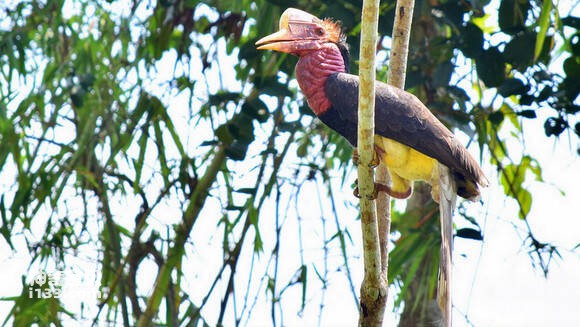
Helmeted hornbills usually live in pairs or small groups, except during the breeding period. They live in trees and sometimes feed on the ground. The cry was "Quack, quack, quack," very loud. Fly with your head and neck straight forward and your wings flat.
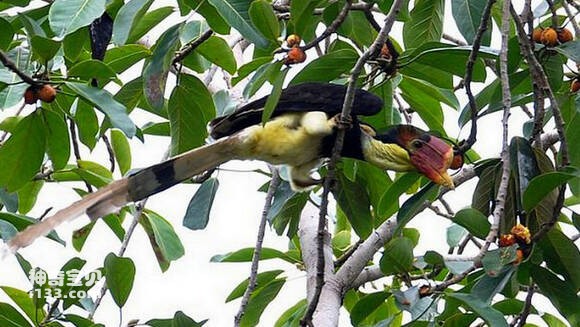
Helmeted hornbills feed mainly on the fruits and seeds of plants such as fruits and figs, but also snails, worms, insects, mice and snakes. When eating, it is common to throw the food in the air first, and then catch it accurately with the mouth before swallowing it. Indigestible fruit pits, animal bones and other food residues are vomited back from the stomach.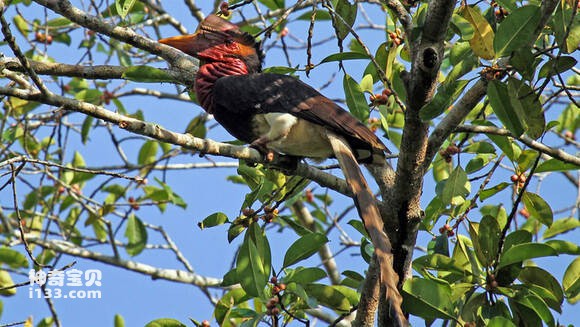
Helmeted hornbill breeding characteristics like most birds of the hornbill family, nesting in a tree hole, where the female birds lay eggs, the male bird with mud seal the hole, leaving only a small hole from the outside to feed, the chicks hatch until the feathers are nearly full, the female bird broke the hole to fly out.

The breeding period of helmeted hornbills is from January to March or from May to November. Nests are built at the bottom of stone holes, rock crevices or tree holes on cliffs, and some nests can be used for several years. The height of the cave from the ground is about 60 meters, the diameter of the hole is about 60 centimeters, and the nest is paved with pine leaves, weeds, feathers, etc. The nest has a diameter of 27 cm and a depth of 13 cm. Each litter lays 2-3 eggs. The female incubates her eggs in a closed nest.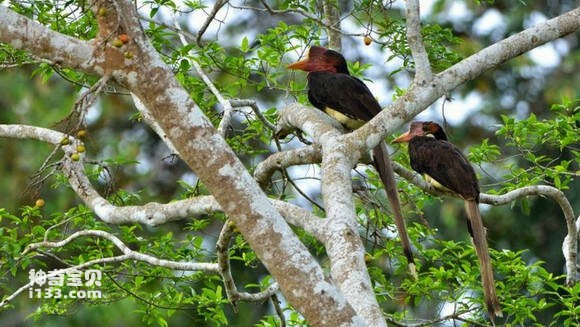
Helmeted hornbills and other hornbills have the same breeding habits, the female bird chooses a nest site, lays a layer of wood chips at the bottom of the hole, and lays eggs in the hole. After laying eggs, squatting in the nest no longer goes out, and piles his excreta mixed with seeds and rotten wood in the hole. Male birds from outside the nest frequently bring wet mud, fruit residue, to help female birds seal the hole. The material that seals the tree hole seeps through the viscous stomach juices of the female bird, so it is very strong. Finally, a vertical gap is left in the hole for the female to reach out to the male for feeding. The female stays in the hole for months, only to escape when the chicks are ready to fly. In the meantime, the males feed. Male birds can peel off the innermost layer of the stomach wall and spit it out in a thin film, which is used to store fruit for female birds and young birds to eat. The female bird comes out of the hole with new feathers and is immediately responsible for feeding her chicks. Female birds in the closed cave, but also from time to time to clean feces and other dirt, it directly throws out the hole with its mouth, when it defecates itself, the anus directly sprayed out of the hole, this strange way of life, may be the harm of natural enemies, and with the harsh natural environment to fight against the formation of adaptation. Incubation period is 28-40 days.
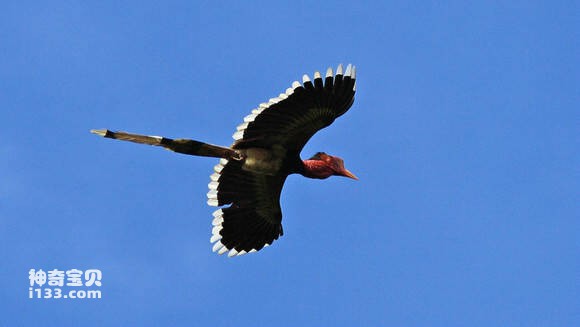
The helmeted hornbill, originally from the tropical rainforests of East Asia, was hunted and made into handicrafts because of the solid and beautiful texture of its head, and was once introduced into China by way of tribute and trade, and was named crane top. However, because we only saw the finished products but did not see the living things, so there are many false assumptions in the accounts of people. End this argument.
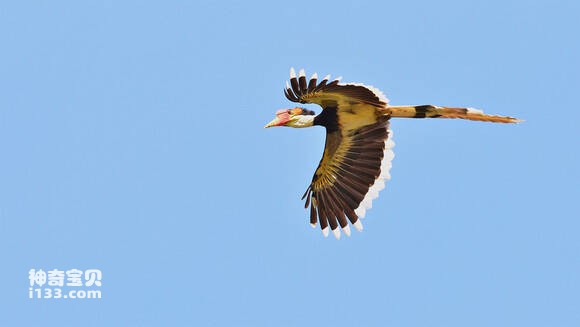
Heding entered China in the Yuan Dynasty, but it was widely known to the Chinese people after Zheng He's voyages to the West. Because the country of production is mostly regarded as tribute, the system is not only listed under the country of tribute, but also provides a formal return price. The officials of the court used to make cups, belts and so on for fun. After the middle leaves of the Ming Dynasty, the national strength gradually weakened, and the producing countries no longer paid tribute, so He Dinghong gradually became less and more valuable; Until the beginning of the Qing Dynasty, the sea ban policy was implemented, and the origin of trade was cut off, and it became very popular in China.
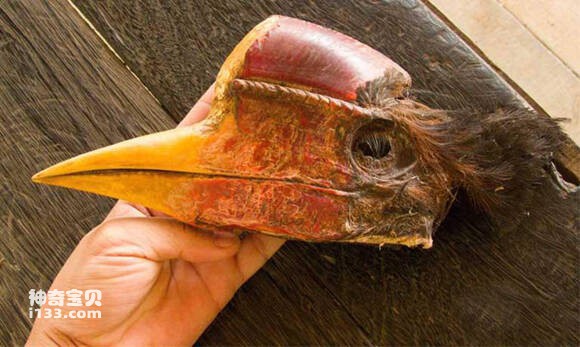
Because the helmet hornbill head is solid, red outside and yellow inside, various handicrafts made of it (known as "Heding red") are collected. As the collection heats up, the underground trade is constantly banned, and the survival of the helmeted hornbill as an endangered species is under great pressure.
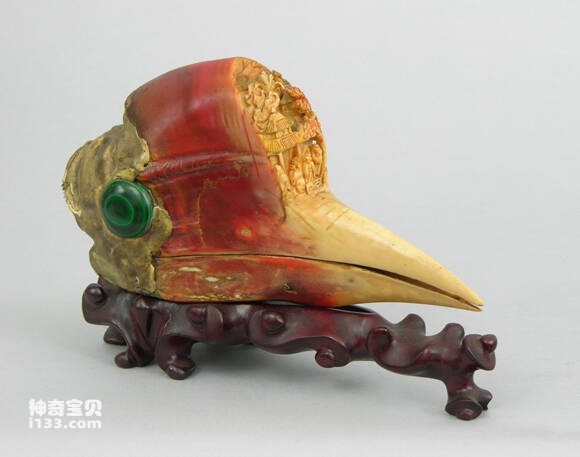
Helical hornbill head, like ivory and rhino horn, is a prohibited product in international trade, and its crime is stipulated in Article 341 of the Criminal Law of the People's Republic of China: Whoever illegally hunts or kills rare or endangered wildlife under special State protection, or illegally purchases, transports or sells rare or endangered wildlife under special State protection and the products made therefrom shall be sentenced to fixed-term imprisonment of not more than five years or criminal detention and shall also be fined; If the circumstances are serious, he shall be sentenced to fixed-term imprisonment of not less than five years but not more than 10 years and shall also be fined; If the circumstances are especially serious, he shall be sentenced to fixed-term imprisonment of not less than 10 years and shall also be fined or sentenced to confiscation of property.
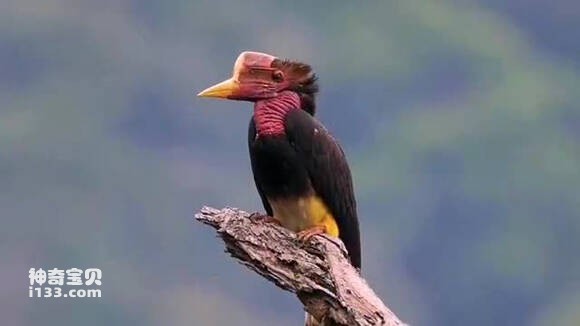
Listed on the International Union for Conservation of Nature (IUCN) 2015 Red List of Threatened Species ver 3.1 - Critically Endangered (CR).
Listed in the Washington Convention (CITES) Appendix I protected animals.
Listed in Appendix I, Appendix II and Appendix III of the Convention on International Trade in Endangered Species of Wild Fauna and Flora (CITES) 2019 edition.
Protect wild animals and eliminate wild meat.
Maintaining ecological balance is everyone's responsibility!








